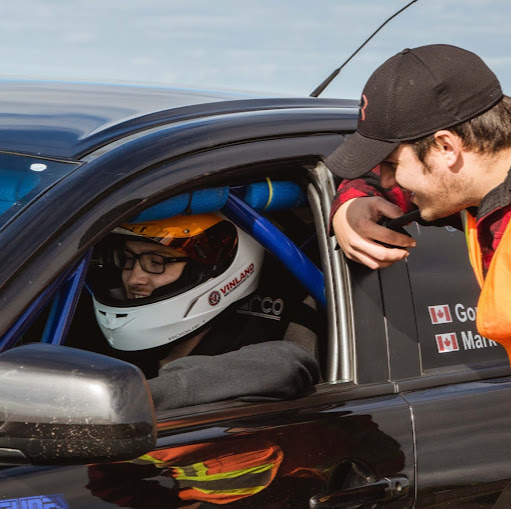David S Rundle
age ~60
from Butler, PA
- Also known as:
-
- David Sean Rundle
- David S Rungle
- David S Rundles
- Dave S Rundle
- Phone and address:
-
119 Heartland Dr, Butler, PA 16001
7244820010
David Rundle Phones & Addresses
- 119 Heartland Dr, Butler, PA 16001 • 7244820010 • 7244820040
- Cranberry Township, PA
- Conifer, CO
- Foster City, CA
- Belmont, CA
- Golden, CO
- East Butler, PA
- 119 Heartland Dr, Butler, PA 16001 • 7244820040
Work
-
Position:Professional/Technical
Education
-
Degree:Associate degree or higher
Emails
Resumes

Sales And Customer Support Engineer At Kromek
view sourcePosition:
Sales and Customer Support Engineer at Kromek
Location:
Greater Pittsburgh Area
Industry:
Semiconductors
Work:
Kromek - Greater Pittsburgh Area since May 2013
Sales and Customer Support Engineer
eV Products a division of Endicott Interconnect Technologies - Saxonburg PA Jan 2002 - Apr 2012
Senior Applications Development Engineer / Technical Product Manager / Sales Engineer
Diebold MedSelect Systems Sep 1997 - Jul 2001
Sr Product Manager
Gambro Healthcare Jan 1991 - Sep 1997
Product Manager / Business Systems Specialist
Sales and Customer Support Engineer
eV Products a division of Endicott Interconnect Technologies - Saxonburg PA Jan 2002 - Apr 2012
Senior Applications Development Engineer / Technical Product Manager / Sales Engineer
Diebold MedSelect Systems Sep 1997 - Jul 2001
Sr Product Manager
Gambro Healthcare Jan 1991 - Sep 1997
Product Manager / Business Systems Specialist
Skills:
R&D
Product Development
Product Management
Dual Energy X-ray Absorptiometry (DEXA)
Industrial X-ray Inspection
X-ray Food Inspection
Gamma Spectroscopy
Applications Development
Radiation Detectors
CdZnTe Detector Fabrication
High Speed Photon Counting
X-ray
Software Development
Quality Management
Cross-functional Team Leadership
Physics
Systems Engineering
Embedded Software
System Design
Medical Devices
Product Development
Product Management
Dual Energy X-ray Absorptiometry (DEXA)
Industrial X-ray Inspection
X-ray Food Inspection
Gamma Spectroscopy
Applications Development
Radiation Detectors
CdZnTe Detector Fabrication
High Speed Photon Counting
X-ray
Software Development
Quality Management
Cross-functional Team Leadership
Physics
Systems Engineering
Embedded Software
System Design
Medical Devices

David Rundle
view sourceLocation:
United States

David Rundle
view sourceLocation:
United States
Us Patents
-
Signal Discriminator For Radiation Detection System And Method
view source -
US Patent:20080135771, Jun 12, 2008
-
Filed:Mar 7, 2006
-
Appl. No.:11/815343
-
Inventors:Viatcheslav Vydrin - Pittsburgh PA, US
Robert K. Davis - Pittsburgh PA, US
David S. Rundle - Butler PA, US -
Assignee:II-VI INCORPORATED - Saxonburg PA
-
International Classification:G01T 1/24
-
US Classification:25037009
-
Abstract:A radiation detection system is operative for converting () a radiation event into an electrical signal having an amplitude related to the energy of said radiation event, converting () at least a portion of the electrical signal into a count value related to the amplitude of the electrical signal and determining () the energy of the radiation event from the count value.
-
Energy Discriminating Scatter Imaging System
view source -
US Patent:20080267353, Oct 30, 2008
-
Filed:Jun 15, 2006
-
Appl. No.:11/916591
-
Inventors:David S. Rundle - Butler PA, US
-
Assignee:II-VI INCORPORATED - Saxonburg PA
-
International Classification:G01B 15/02
G01N 23/201 -
US Classification:378 87, 378 89, 378 86
-
Abstract:A specimen inspection system includes a photon source for outputting photons along a transmission path and a conveyor for translating a specimen completely through the transmission path. A radiation detector is positioned offset with respect to the transmission path for detecting photons that are scattered from the transmission path in response to interaction with the specimen passing therethrough. A controller determines from the detected scattered photons that a first material is present in the specimen.
-
Count Correction In A Photon Counting Imaging System
view source -
US Patent:20110101231, May 5, 2011
-
Filed:Jun 11, 2009
-
Appl. No.:12/865218
-
Inventors:David S. Rundle - Butler PA, US
-
Assignee:EV PRODUCTS, INC. - Saxonburg PA
-
International Classification:H05G 1/60
-
US Classification:25037009
-
Abstract:In a method of count correction for pixels of a pixilated photon counting detector, the average count value output by each of a plurality of pixels during a period of time is determined. A product is determined of the actual average count value and a multiplying correction factor. A corrected count value is then determined for the pixel equal to a sum of the product and an additive correction factor. The multiplying correction factor equals a square root of a quotient of a desired average count value to be output by each of the plurality of pixels during the period of time divided by the actual average count value. The additive correction factor equals a product of the multiplying correction factor and the actual average count value subtracted from the desired average count value.
-
X-Ray Photon-Counting Data Correction Through Deep Learning
view source -
US Patent:20220308242, Sep 29, 2022
-
Filed:Mar 25, 2022
-
Appl. No.:17/704520
-
Inventors:Ge Wang - Loudonville NY, US
Mengzhou Li - Troy NY, US
David S. Rundle - Butler PA, US -
Assignee:Rensselaer Polytechnic Institute - Troy NY
-
International Classification:G01T 1/17
G06N 3/04
G06N 3/08
G01T 1/36 -
Abstract:A method for x-ray photon-counting data correction. The method includes generating, by a training data generation module, training input spectral projection data based, at least in part, on a reference spectral projection data. The training input spectral projection data includes at least one of a pulse pileup distortion, a charge splitting distortion, and/or noise. The method further includes training, by a training module, a data correction artificial neural network (ANN) based, at least in part, on training data. The data correction ANN includes a pulse pileup correction ANN, and a charge splitting correction ANN. The training data includes the training input spectral projection data and the reference spectral projection data.
-
Neural Network-Based Corrector For Photon Counting Detectors
view source -
US Patent:20230035618, Feb 2, 2023
-
Filed:Aug 26, 2022
-
Appl. No.:17/896279
-
Inventors:- Troy NY, US
Ruibin Feng - Troy NY, US
David Rundle - Butler PA, US -
Assignee:Rensselaer Polytechnic Institute - Troy NY
-
International Classification:G01T 1/17
G01T 1/18
G06T 7/00 -
Abstract:A neural network based corrector for photon counting detectors is described. A method for photon count correction includes receiving, by a trained artificial neural network (ANN), a detected photon count from a photon counting detector. The detected photon count corresponds to an attenuated energy spectrum. The attenuated energy spectrum is related to characteristics of an imaging object and is based, at least in part, on an incident energy spectrum. The method further includes correcting, by the trained ANN, the detected photon count to produce a corrected photon count. The method may include reconstructing, by image reconstruction circuitry, an image based, at least in part, on the corrected photon count.
-
A Neural Network-Based Corrector For Photon Counting Detectors
view source -
US Patent:20200408929, Dec 31, 2020
-
Filed:Dec 7, 2018
-
Appl. No.:16/770675
-
Inventors:- Troy NY, US
Ruibin Feng - Troy NY, US
David Rundle - Butler PA, US -
Assignee:RENSSELAER POLYTECHNIC INSTITUTE - Troy NY
-
International Classification:G01T 1/17
G01T 1/18
G06T 7/00 -
Abstract:A neural network based corrector for photon counting detectors is described. A method for photon count correction includes receiving, by a trained artificial neural network (ANN), a detected photon count from a photon counting detector. The detected photon count corresponds to an attenuated energy spectrum. The attenuated energy spectrum is related to characteristics of an imaging object and is based, at least in part, on an incident energy spectrum. The method further includes correcting, by the trained ANN, the detected photon count to produce a corrected photon count. The method may include reconstructing, by image reconstruction circuitry, an image based, at least in part, on the corrected photon count.
Isbn (Books And Publications)

Googleplus

David Rundle
Education:
Anne Arundel Community College
Relationship:
Married
About:
Storm-chaser computer-hacker cyber-mythbuster; daddy husband son brother student mentor teacher and friend. I'm these things and more.

David Rundle

David Rundle

David Rundle

David Rundle

David Rundle

David Rundle

David Rundle
view source
David Rundle
view source
David A. Rundle
view source
Jamie David Rundle
view source
David Rundle
view source
David Rundle
view source
David Rundle
view source
David Rundle
view sourceClassmates

David Rundle
view sourceSchools:
St. Paul Lutheran School Glen Burnie MD 1982-1988, Old Mill Middle School South Millersville MD 1988-1991

David Rundle
view sourceSchools:
New Westminster Secondary School New Westminster Saudi Arabia 1979-1983

David Rundle | Adirondack...
view source
David Rundle, Greystanes ...
view source
Usborne Central Public Sc...
view sourceGraduates:
David Rundle (1965-1973),
Murray Armstrong (1972-1974),
Candice Lawrnce (2001-2003),
Janet Marquardt (1967-1976)
Murray Armstrong (1972-1974),
Candice Lawrnce (2001-2003),
Janet Marquardt (1967-1976)
Myspace
Youtube
Get Report for David S Rundle from Butler, PA, age ~60








